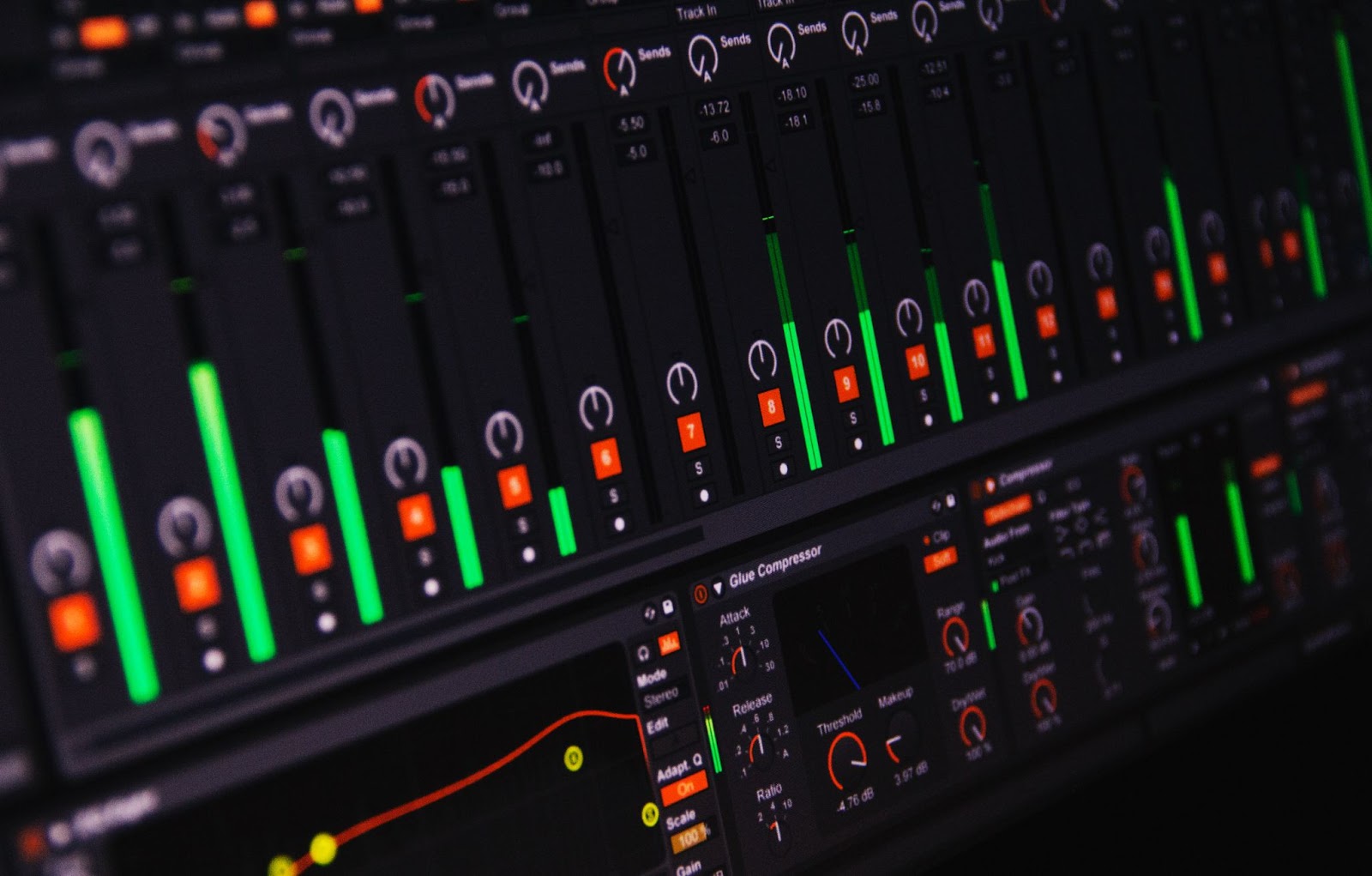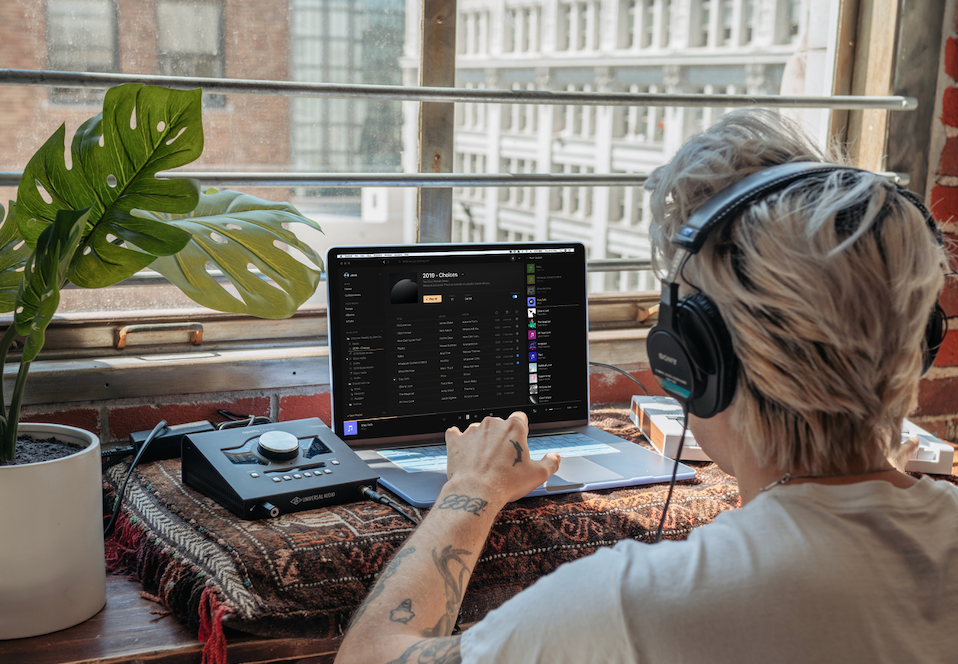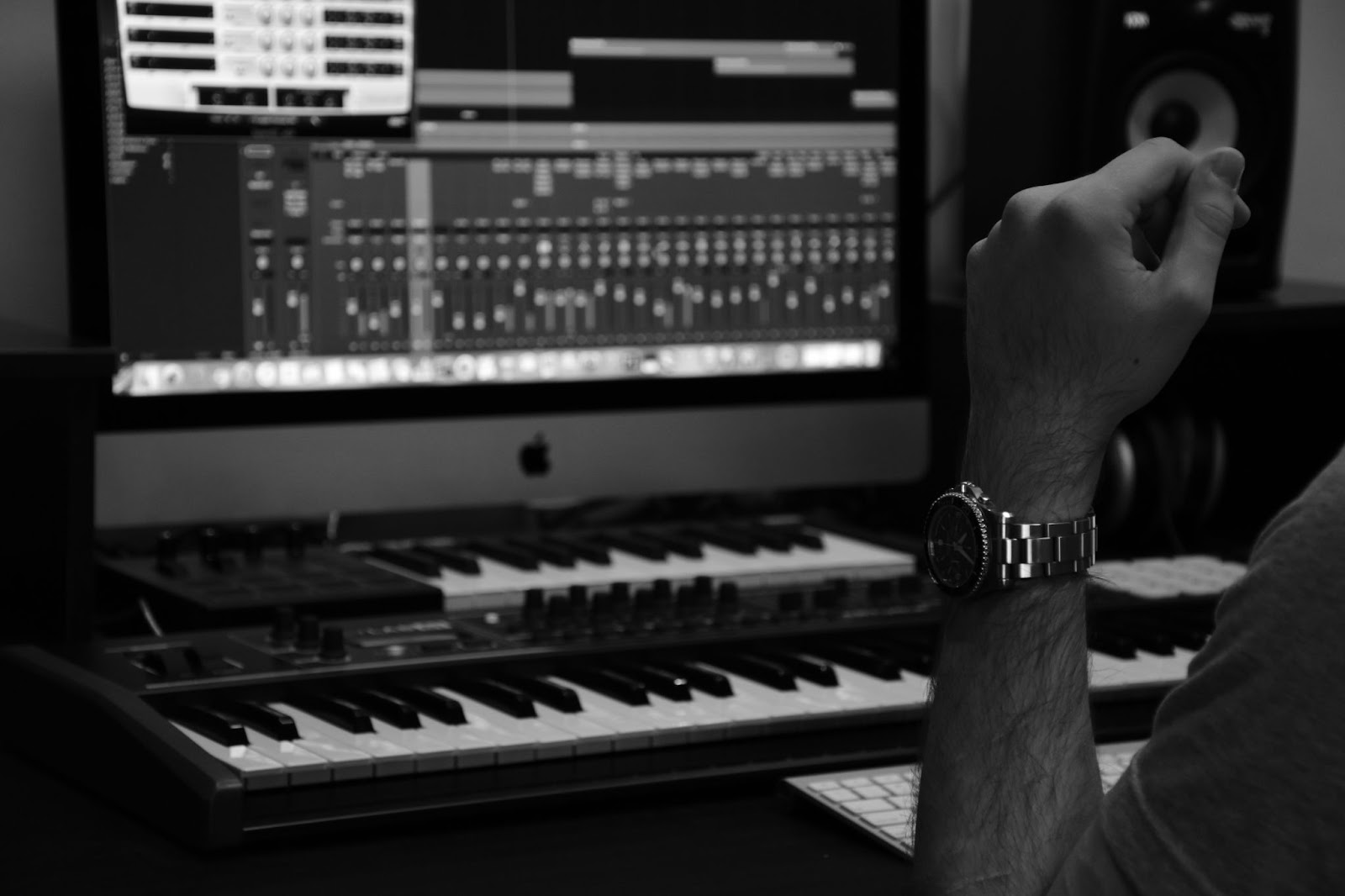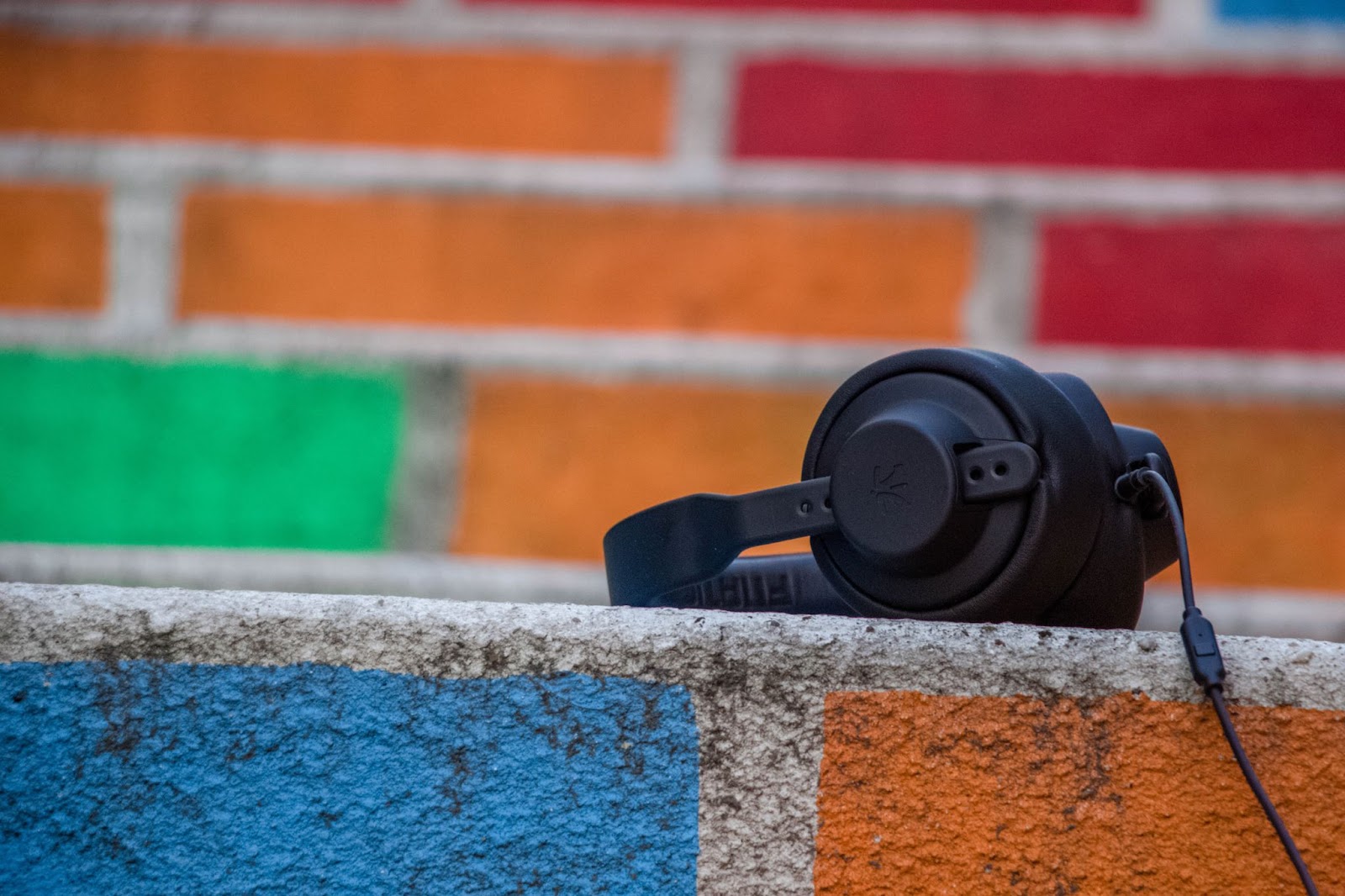The Essential Beat Making Equipment
for Your Home Studio

So you are pondering over the idea of getting started in music production and beat making, but you’re not quite sure where to start. I remember back in 2002 when I began my own journey in music production, it was daunting and confusing.
Trying to understand what was meant by sampling, mixing, EQ, compression and all the other music production jargon, it felt like learning a new language. It wasn’t only the terminology used to describe the production processes that was difficult to comprehend, but also what equipment I needed, and probably more importantly – what I didn’t need.
Fast forward 21 years and with the internet now being a fantastic resource to research these topics, the path to becoming a music producer should be more straightforward.
That said, the amount of equipment and software on the market today can make it equally difficult to decide what to invest in, and what would suit your specific needs best.
Well, we’re here to help, to simplify this process, empowering you to make an educated decision on what to purchase.
1. Computer/DAW: A computer is essential for electronic music production, unless you plan to use only hardware, which is unlikely if you are just starting out. You will need a reasonably powerful computer with digital audio workstation (DAW) software installed. Some popular DAWs include Ableton Live, Logic Pro, and FL Studio.
2. Audio Interface: An audio interface is a device that connects your computer to external audio equipment such as microphones, synthesizers, and monitors. It also converts analog signals to digital signals for your computer to process.
3. MIDI Keyboard: A MIDI keyboard is a keyboard controller that allows you to control virtual instruments and software synthesizers in your DAW. A basic MIDI keyboard can be purchased for around $100.
4. Headphones/Studio Monitors: Headphones or speakers are necessary to monitor (listen) your music while you produce. You can use any pair of headphones or speakers you have, but it’s highly recommended to use studio monitors for better accuracy and results.
Let’s delve into these topics a little deeper to see what direction might suit you best.
Computer/DAW

When it comes to choosing a computer for music production, there are two main options, Mac and Windows. Mac tends to be more popular with creatives and DJs, mainly due to its incredible stability and lifespan. I’m actually writing this article on a 9 year old Macbook Pro, which is still my main studio computer and can still cope with complex music projects. The downside to Mac is the initial outlay, Mac’s are eye-wateringly expensive compared to a Windows PC computer.
Portability is also a consideration, if you plan to take your set up on the road, holiday, or to a fellow producer’s home then you might choose a laptop over a desktop.
If you don’t already have a Mac, and you’re on a budget, then a Windows PC might be a better option, leaving some funds for the other equipment you’ll need to purchase. If Windows PC’s are well maintained and kept away from malicious websites and cracked software, they can do a fantastic job for the purpose of music production. Most Digital Audio Workstations (DAW) will run on Mac or PC, however there are a few exceptions, such as Logic Pro, which is made by Apple and is not supported on Windows.
This leads us on to, which DAW to choose?
There are now many DAWs to choose from, each having their own benefits and typical user base. Some are free, some offer great value for money and others are very expensive. Doing some research about each DAW and the type of beat maker that they attract will be time well spent. For example, Ableton Live tends to appeal to producers making House and Techno, whereas Hip Hop and Rap producers seem to like Logic Pro. That’s not the case for everyone though, I primarily make House and Techno, but prefer Logic Pro to using Ableton Live.
Here are 5 different (paid-for) DAWs along with the type of producer they might suit:
One free DAW is Cakewalk by BandLab:
Cakewalk by BandLab is a free DAW that was previously developed by Cakewalk, a company that was acquired by BandLab Technologies in 2018. It has a range of advanced features that make it suitable for recording, mixing, and mastering audio. Cakewalk by BandLab is available on Windows and has a user-friendly interface that is suitable for both beginners and experienced producers. It also has a range of software instruments and effects that can be used to create a variety of genres.
Audio Interface

An audio interface is a device that connects your computer to your studio equipment, such as microphones, instruments, and speakers, and enables you to record and playback audio. In music production, an audio interface is an essential component for high-quality recording, mixing, and mastering of audio.
The audio interface acts as a bridge between the analog and digital worlds, allowing the analog audio signals from your microphones and instruments to be converted into digital signals that can be processed by your computer. It also converts the digital audio signals from your computer back into analog signals that can be heard through your studio monitors or headphones.
Audio interfaces are important in music production for several reasons:
1. Sound quality: An audio interface allows you to record and playback audio at a higher quality than the built-in sound card on your computer. Most audio interfaces use higher-quality converters and preamps, which can result in a cleaner and more detailed sound.
2. Latency: Audio interfaces can reduce latency, which is the delay between the time you play or sing a note and the time you hear it through your monitors or headphones. Low latency is essential for recording, especially if you’re playing with a live band or using software instruments.
3. Connectivity: Audio interfaces provide a range of inputs and outputs that can connect your microphones, instruments, and other studio equipment to your computer. This allows you to record multiple channels of audio simultaneously, which is essential for recording live performances or multi-track recording.
4. Flexibility: Audio interfaces offer a range of features, such as phantom power for condenser microphones, direct monitoring, and built-in DSP processing. These features allow you to customize your recording setup to suit your needs and achieve the sound you’re looking for.
Prices for audio Interfaces vary dramatically, but for starting out a budget of $100-$200 should be enough to purchase an audio interface that’ll last many years and give some options to expand your studio.
As a minimum, the audio interface should be USB powered, if you want the option to take your set up on the road or to places where there might be no power supply. It should have a stereo output to connect to studio monitor speakers and at least one input, so you can plug in a microphone or mono instrument, a stereo input would be better but will be slightly more expensive.
The Focusrite Scarlett 2i2 or Universal Audio Volt 2 are great examples of audio interfaces suited to either entry level, or simple home studio setups, that won’t break the bank.
MIDI Keyboard/Controller

I’ve added the MIDI keyboard/Controller to this list, but only to make the point that you might not need one. This will really depend on whether you want to play notes and chords in a pianistic style, or trigger samples manually in a live sense by pressing performance pads.
Some producers prefer not to play live at all, opting to use sequencers or plugins that allow you to play notes and chords by pressing single keys on your computer keyboard.
For example, Pilot Plugins generates MIDI note sequences, removing the need for a MIDI Keyboard. Captain Play allows you to play chords and notes by pressing on your computer keyboard, negating the need to have a MIDI keyboard as part of your studio.
This is something to consider, as skipping on this aspect will allow you to invest more money into the other elements of your setup. Of course, if you can already play the piano/keyboard, or plan to learn, then a MIDI keyboard will be an important purchase.
Here are some things to consider when purchasing a MIDI keyboard.
Headphones/Studio Monitors

Music producers use dedicated studio-grade headphones and loudspeakers because they offer an uncoloured and flat frequency response. This means what you hear is a true representation of the sound. Other types of headphones and speakers which are meant for listening, such as AirPods and home music systems, are designed to boost certain frequencies to make the music more exciting, but we do not want this when making music.
You might be thinking, should I use headphones, or monitor speakers? In my opinion, you should have both. This allows you to be portable with your set up, but also find a balance between a mix that sounds good on both headphones and loudspeakers.
For a good set of studio headphones, look to pay around $100-$200, popular choices are the Audio-Technica M50X or Sennheiser HD25.
For studio monitors, consider the size of your room, if small then you’ll be looking for monitors with up to a 5 inch driver. A large room will be better suited with 8 inch drivers. There are many options to choose from, and I’d always recommend reading reviews before purchasing, but notable choices are entry-level models from Adam, Mackie, Yamaha and KRK. A good budget pair of studio monitors will cost upward of $500.
Overall, the minimum equipment needed to make electronic music at home includes a computer, DAW, audio interface, headphones and monitor speakers. As you progress, you may want to invest in additional equipment, such as synthesizers or drum machines, to expand your creative possibilities; so it’s a good idea to think ahead when purchasing each of these pieces of equipment and whether they will suit your future needs.